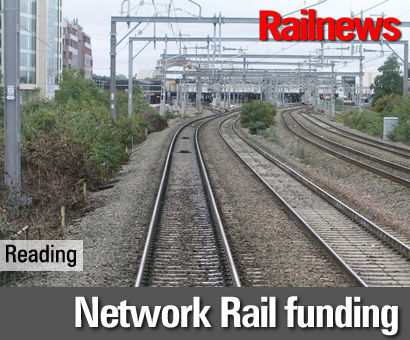THE government is expected to reveal details of its delayed Statement of Funds Available for railway maintenance and enhancements between 2019 and 2024 by the end of the week (writes Sim Harris).
Network Rail is waiting to see which projects could be restarted, after a cull of electrification schemes which was prompted by sharply rising costs.
The SOFA document should have been issued in July, but transport secretary Chris Grayling deferred any specific decisions with numbers attached to them.
However, both the Office of Rail and Road and NR now need to know where they stand, because several crucial budget landmarks will fall in 2018. In January the ORR will produce its conclusions following the consultation which it held in July this year. The draft determination will follow in June and the final version in October, ready for the start of Control Period 6 in April 2019.
The ORR could take a relatively hawkish position, because it has been critical of Network Rail’s efficiencies, although some CP5 schemes have survived the cutbacks. Electrification is going ahead this winter between Preston and Blackpool North, while the Ordsall Chord in Manchester is due to open in December, providing a heavy rail connection between Piccadilly and Victoria for the first time.
Further south, the core electrification of the Great Western Main Line between London and Cardiff is progressing, with OHLE now completed as far as Didcot Parkway. Energised sections in public service only reach Maidenhead at the moment, but electric train services will be progressively extended west during the coming year.
GWR is also set to welcome passengers on board its first Hitachi-built Intercity Express on Monday 16 October, although GWR said it is going for a ‘soft launch’ and will be inserting the first Class 800 into service on the route between London and Bristol without much ceremony.
Meanwhile, speculation is mounting about the level of railway investment which can be expected between 2019 and 2014, amid hopes that at least some of the cancelled schemes could be given a second chance.
The initial settlement for 2014-2019 was £38.4 billion, including £12 billion for enhancements – which has not proved to be enough to cover the projects set out in the 2012 High Level Output Specification, or HLOS.
The most recent HLOS was issued on 20 July this year, but unlike the 2012 version – which featured detailed maps of routes to be electrified – the new document ducks away from naming any future enhancements, saying: “The emphasis in this Statement is on the changes achievable through the operations, maintenance and renewal of the existing railway over the coming five year Control Period. The Statement does not commit to infrastructure enhancements. These are expected to be dealt with separately.”
The lack of certainty has prompted a range of predictions from third parties, which may or may not be well-informed. The Guardian is optimistic, saying: “Network Rail is set to be granted an enhanced budget, likely to be more than £40 billion,” although it also concedes that projects like Transpennine electrification could be funded separately.
Other sources are less sanguine about the government’s stance. New Civil Engineer says: “It is a given that he [chief executive Mark Carne] is going to get less cash to spend in the next five year cycle.”
Mark Carne has already said that he wants more private sector investment in the railway, and fair contributions from third parties, such as developers, when railway improvements boost land values.
During a visit to GWML electrification yesterday (10 October), he pointed to new blocks of flats alongside Reading station, which was greatly enlarged earlier in this decade. He told Railnews: “Look at those flats. They have appeared since we remodelled Reading, and they will have occupants who plan to travel straight to Canary Wharf from here when the Elizabeth line services start. But we don’t receive any part of the developers’ profits.”
By the end of this week it is likely that the DfT will have placed at least some of its cards on the table, and if so railway planning can then start to move forward again.


